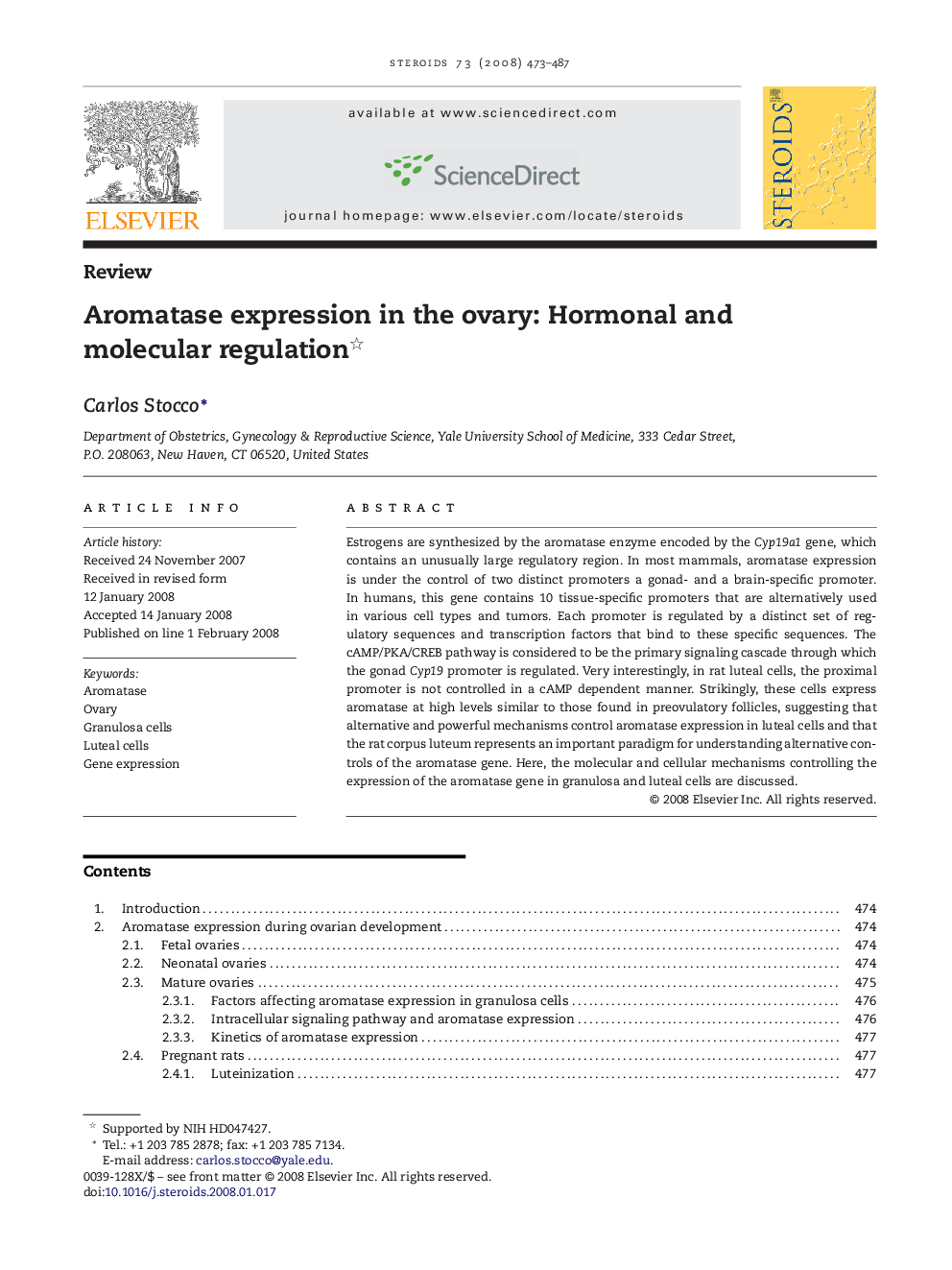| Article ID | Journal | Published Year | Pages | File Type |
|---|---|---|---|---|
| 2028850 | Steroids | 2008 | 15 Pages |
Estrogens are synthesized by the aromatase enzyme encoded by the Cyp19a1 gene, which contains an unusually large regulatory region. In most mammals, aromatase expression is under the control of two distinct promoters a gonad- and a brain-specific promoter. In humans, this gene contains 10 tissue-specific promoters that are alternatively used in various cell types and tumors. Each promoter is regulated by a distinct set of regulatory sequences and transcription factors that bind to these specific sequences. The cAMP/PKA/CREB pathway is considered to be the primary signaling cascade through which the gonad Cyp19 promoter is regulated. Very interestingly, in rat luteal cells, the proximal promoter is not controlled in a cAMP dependent manner. Strikingly, these cells express aromatase at high levels similar to those found in preovulatory follicles, suggesting that alternative and powerful mechanisms control aromatase expression in luteal cells and that the rat corpus luteum represents an important paradigm for understanding alternative controls of the aromatase gene. Here, the molecular and cellular mechanisms controlling the expression of the aromatase gene in granulosa and luteal cells are discussed.
